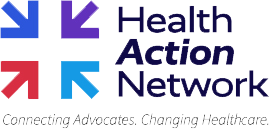A quick roundup of the issues driving the healthcare reform conversation.

Week in Review
HOSPITAL QUALITY The majority of hospitals now receive average – or below average – quality scores.
Quick takeaway: In the years following the coronavirus public health emergency, many hospitals have struggled to provide safe and effective care.
Digging deeper: According to updated hospital star ratings data from the Centers for Medicare & Medicaid Services (CMS), more hospitals now rank lower compared to last year. These ratings, based on a five-star scale, assess hospitals’ performance across a number of measures, including mortality and readmission rates, emergency department treatment, and value of care.
Of the nearly 3,000 hospitals rated by CMS, 60 percent received three stars or less. Glaringly, the number of hospitals only receiving one star increased by nearly 30 facilities, while one hundred fewer hospitals received five stars.
What it means: At a time when hospitals are increasingly seeking higher reimbursement rates from health plans, government partners, employers, and consumers, there’s a growing sense that patients aren’t getting what they’re being asked to pay more for.
HOSPITAL DISPARITY The gap between rich and poor hospitals widens.
Quick takeaway: Large health systems are seeing their financials soar this year, while smaller facilities in outlying areas are struggling to hang on.
Digging deeper: Improved market volatility, increased care utilization, stabilizing drug prices, and more predictable supply and labor costs, have largely improved the hospital industry’s outlook. This is especially true for large, for-profit health systems.
Unfortunately, these benefits aren’t being shared equally across the provider landscape, as many smaller, nonprofit hospitals are operating on razor thin margins.
What it means: There’s fear that this worsening divide only threatens access for vulnerable patients, while hastening consolidation in an industry that’s been a magnet for mergers and acquisitions.
WEIGHT-LOSS Rx As employers’ coverage of weight-loss drugs goes up, so do their costs.
Quick takeaway: Nearly one-third of U.S. employer health plans are now offering coverage of GLP-1 drugs for both diabetes and weight-loss, up from 26 percent in 2023.
Digging deeper: These drugs have also driven up employers’ healthcare costs, as the cost of covering GLP-1s for weight-loss grew as a portion of overall medical claims spending from 6.9 percent last year to 8.9 percent so far in 2024.
As recently as last year, global sales of GLP-1 drugs were forecasted to reach $100 billion by next decade. Based on rising demand, analysts have already upped those projections to $150 billion by the early 2030s.
What it means: In a recent survey, employers pointed to the high cost of medical services and specialty drugs as their top healthcare cost management challenges. With only about half of the surveyed employers saying they effectively manage their healthcare costs, the increased utilization of GLP-1s is cause for rising concern.
HOSPITAL FINANCES The hospital industry continues to show financial improvement.
Quick takeaway: Hospitals’ improved financial performance has them on much more solid ground than they’d have you believe.
Digging deeper: One need look no further than what’s happening at a pair of New York hospitals to diagnose the health of their respective balance sheets.
At one pricey hospital in New York City, which reportedly charges multiple times the average rate per birth in the U.S., new mothers are lavished with expensive perfumes and designer bags.
Elsewhere, New York’s largest healthcare system, Northwell Health, recently announced that it was launching its own in-house production company, developing scripted and unscripted content for film and television.
What it means: With medical inflation stretching budgets for employers and families across the country, stories like these highlight the disparity between hospitals’ cries of financial exposure and how they’re spending patients’ money.
Spotlight
| You can keep up with the latest by following the Health Action Network on X and by liking us on Facebook. And, be sure to check us out on LinkedIn, too. As always, let us know if there’s something you’d like to see covered in a future newsletter. |
The Health Action Network includes everyday Americans—families, workers, businesses, patients, providers, neighbors, and friends. We are working together because we support market-based solutions that offer better healthcare choices and help build a stronger economy. The Health Action Network is an Elevance Health, Inc., initiative.

